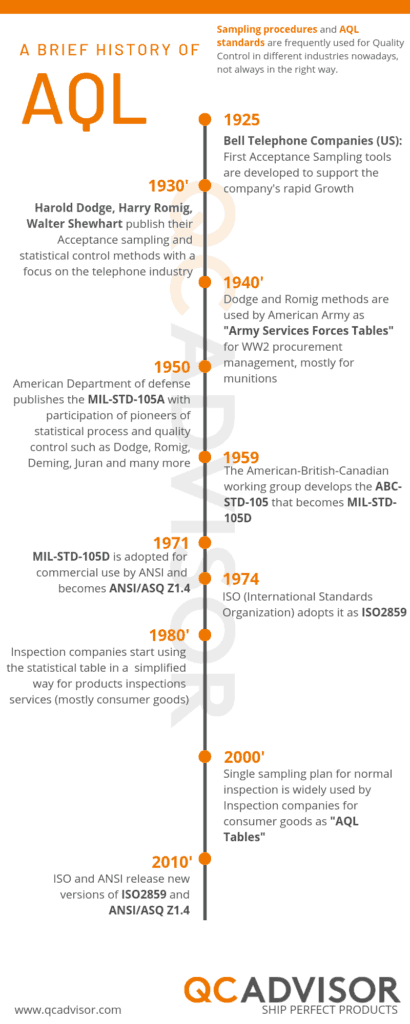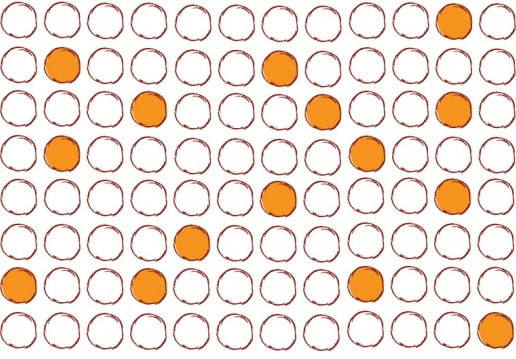Sampling procedures and AQL standards are frequently used for Quality Control, to help you get an idea of a batch quality without having to inspect all of it. But are things that simple?
Buyers, Quality Managers, QC teams and 3PQC from all over the World use it generally to define 2 things:
- How many samples to select for inspecting your batch
- Above how many defective parts from this sample size you inspected, your whole batch is considered as not meeting your quality standards.
These standards were developed around 1930’s and started being standardized around 1950’s for the telephone industry and then for the American Army procurement management. The way they are used nowadays, is not always consistent with the original methods.
Frequent misuses of the AQL methods
1. They were not designed for isolated batches
One of the major misuses of the AQL method is to use it for an isolated batch. These standards were not designed for isolated lots acceptance. There are far more complex than the single sampling plan for normal inspection that is widely used today.
With normal, reduced or tightened inspection for single, double or multiple sampling plans it is more of a “process control” to identify a process average and not a tool to decide if one specific batch should be accepted or refused, especially when there is no clear statement of quality criteria and defects classification.
AQL standard started to be very successful in the 1980’s with consumer goods inspections because it gave the impression that we could get an overall and reliable inspection result from a small sample size of a products lot, like we could do with a blood test for example to give a positive or negative result. It was then used as the main standard for sampling and acceptance quality limits for almost all 3PQC. In Addition to being perceived as an easy tool for decision by customers, it also gave more credibility to inspection companies that were using internationally recognized “ISO” standards. (ISO2859)
2. Not considering the production quality variation when choosing your inspection Level
The second frequent misuse of the AQL methods, is not considering the quality variation of every type of manufacturing process. Most of 3PQC use Inspection Level II by default for whatever type of product they inspect (Garments, Handmade Bags, Home appliance, Furniture, Electronic Components…)
Take for example products that are manufactured on an automated line like Printed Coffee Paper Cups. Would you inspect them with same Inspection Level as Hand painted smurf toy? Of course not. The variation of Quality is way too different, while very small for Paper cups because of the repetitive and automatic manufacturing process it can be very wide for Hand painted smurf toys. (Several workers with different experience and irregularities of manual work are the main reasons)
So, what really matters to get reliable results from your inspection? Without risk assessment, proper definition of your inspection scope based on your product, your manufacturing process, supplier background and of course your End-User expectation, an inspection can be inaccurate and inefficient. It can be a waste of time and money and most important a risk for your business, ending with defects not detected by your inspector but by your clients…
Successful brands and importers spend more time on their QC strategy, assessing their risk and defining properly what should be inspected and how. AQL standards are not a must to ship perfect products to your customers, especially when standards are not followed properly. Common sense and customization are.






